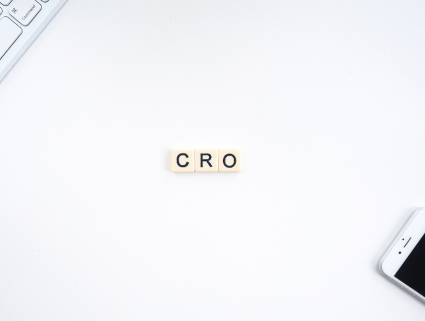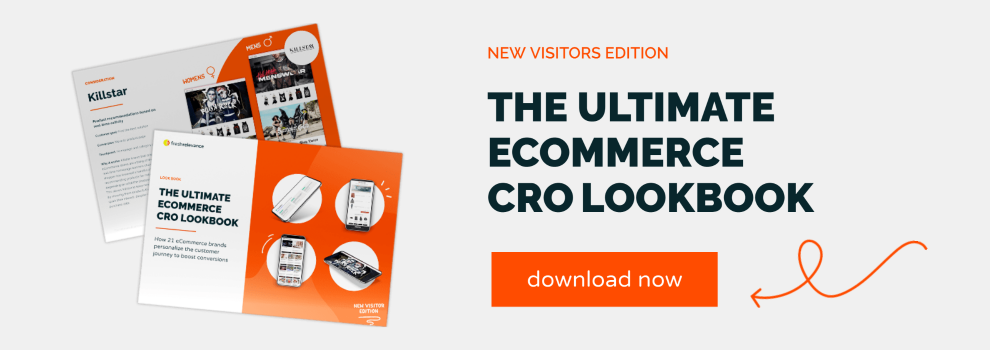We kicked off our CRO blog series by looking at what conversion rate optimization is and the 4 key benefits CRO could bring to your business. In the second post of the series, we’re going to dive into 5 eCommerce conversion tactics for eCommerce websites to help you boost your conversion rates.
Are you feeling fired up and ready to start optimizing your own eCommerce business? Let’s get started with some more conversion rate optimization tips.
1. Product recommendations
Offering product recommendations is a tactic as old as retail itself. And for good reason… Product recommendations work. In fact, product recommendations can generate sales uplifts of up to 11%.
For potential customers visiting your eCommerce website where you don’t have any past purchase or behavioral data to go by, show them trending products and best-sellers. Without the ability to try on, touch and see products in the flesh, customers are more likely to be swayed by other shoppers’ opinions. You could also recommend new arrivals, playing to our built-in expectation that something new must be better than what came before.
For returning web visitors and existing customers, harness the power of familiarity and suggest products that this individual shopper has browsed or purchased frequently. This can serve to engage busy shoppers who might have been distracted before carting their favorite product, or make it easy for loyal customers to replenish their favorite items.
Learn more: The complete guide to personalized product recommendations
2. Dynamic banners
The hero banner is often the first thing that visitors see when they arrive at your online store. Think of it as the headline for your website: the bit that grabs the attention of the returning and potential customer and tells them very quickly if it’s worth staying. Transforming your banner into a piece of dynamic content allows you to show each customer the image that’s most likely to spark their interest, build their confidence and keep them on your eCommerce store.
Show new visitors an image that clearly demonstrates what you have to offer, and builds trust. Even if you don’t yet know the customer’s preferences, you can personalize banners based on the individual’s context. For instance, their location, local weather, time of day or price affinity.
Show returning visitors and customers visiting your eCommerce site an image based on their preferences. This reminds them what they like about your brand and puts them in buying mode. A basic example would be to show a different banner image based on the customer’s preferred product category.
Displaying different banners depending on a customer’s lifecycle stage is another effective tactic. For example, lapsed buyers might be tempted back with a coupon. For regular buyers, you could highlight your latest product range.
Learn more: The complete guide to dynamic content
3. Social proof
Today’s online shoppers are overwhelmed by choice with so many different eCommerce businesses wanting to sell to them, and it takes an exceptional customer experience where decision-making is quick and easy to keep them on your website. Social proof is the secret ingredient you should be using to keep the attention of customers who might otherwise bounce without completing a purchase.
Add your store rating and real-time reviews on your homepage to build trust with new visitors and give them the confidence to keep browsing. For returning visitors and customers, add those all-important product ratings and reviews on the product page to encourage them to add the item to their shopping cart. Including user generated content (UGC) on your product pages is a great way to help shoppers imagine how the products will fit into their lives. And to increase urgency and FOMO, use popularity messaging to show how many other shoppers are looking at or carting a particular product right now.
Learn more: The complete guide to social proof
4. Countdown timers
A countdown timer can be used across channels that eCommerce stores use to market their product because it builds excitement and lets visitors know about important dates.
Use a countdown timer to count down to the end of promotions such as Black Friday to increase urgency and boost eCommerce conversions. You can also highlight the deadline for next day delivery on product pages and shopping carts, helping to speed up the buying process.
Learn more: Improve your eCommerce countdown timers in 5,4,3,2,1
5. Data capture
In order to understand your visitors and provide them with a tailored customer journey, you’ll need to capture their data as soon as possible. One way to do this is with well-timed, behavior-based popovers.
When a new visitor comes to your website, try presenting a popover that offers a discount on their first order when they sign up. This serves two purposes: the visitor identifies themselves with their email address and is tempted to make a purchase. Remember to be mindful of timing and give shoppers enough time to view your website first.
You can also use popovers to capture data from your cart abandoners and encourage them to complete their purchase. Try displaying an exit-intent popover when a shopper leaves your website with something in their cart, giving them the option to have their cart emailed to them.
Learn more: How to create popovers that improve the customer experience
Whether you’re just getting started or you’re looking for ways to continuously improve your eCommerce conversion rate, work through our five tactics and then take a look at the next post in our CRO series: 5 A/B tests to hone your conversion rate optimization strategy.






